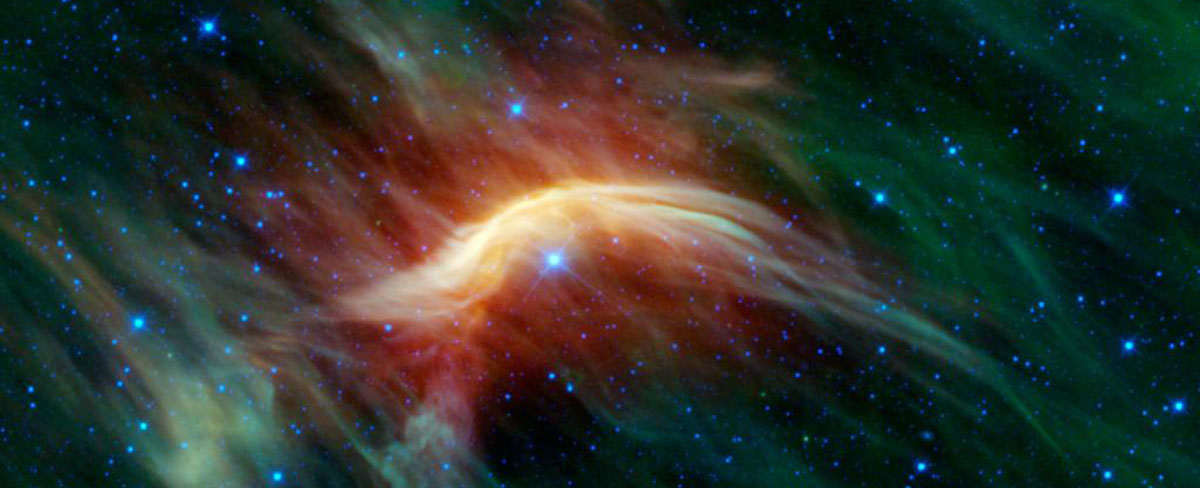ERAU Student Part of Groundbreaking Star Discovery

Last summer Wernke, a Space Physics student, was accepted into a two-month research program at the University of Wyoming, which led a groundbreaking discovery of 100 of the fastest-moving stars in the galaxy, called runaway stars. The stars travel as fast as 54,000 miles per hour through the Milky Way Galaxy and have never been cataloged before.
By using images taken from NASA’s Spitzer Space Telescope (Spitzer) and the Wide-field Infrared Survey Explorer (WISE), Wernke and other researchers were able to detect swift, massive stars. These stars move so quickly that they cause material such as hot gas and dust to build up in front of them — much like a bullet moving through water. This creates an arc-shaped feature called bow shock. By detecting the bow shocks in infrared lights, researchers were able to identify the fast-moving stars.
The research was presented during the 227th American Astronomical Society meeting in Kissimmee, FL, earlier this year.
“It was one of the best summers I ever had,” said Wernke. “We were considered professional astronomers while doing this work and we are still undergrads. Getting to be part of something so huge in the astronomy field was amazing.”
For two months, Wernke spent each night from dawn to dusk working in the observatory that houses a 2.3-meter telescope. The team used archival infrared data from Spitzer and WISE to identify the new bow shocks. They then used WIRO to identify the sources behind the suspected bow shocks, which turned out to be massive stars.
By cataloging these stars, researchers will be able to predict how they will evolve through their lifespan, which could end in a supernova — a rare astronomical event of a massive star’s life marked by a giant explosion.
One massive star, called Zeta Ophiuchi, is traveling around the galaxy faster than the sun, at 54,000 miles per hour, and is about 20 times as massive.
Wernke said that she applied for the research program to get more experience in the field as she works toward pursuing a master’s and doctoral degree in astronomy. She said her time at Embry-Riddle has helped her develop research skills. She is currently working on a project to use numerical methods to model the solar wind. In the future, she aspires to conduct research relating to black holes and active galactic nuclei, which are galaxies powered by black holes.
“I have been interested in anything space related since about second grade and loved math as long as I can remember,” she said.
